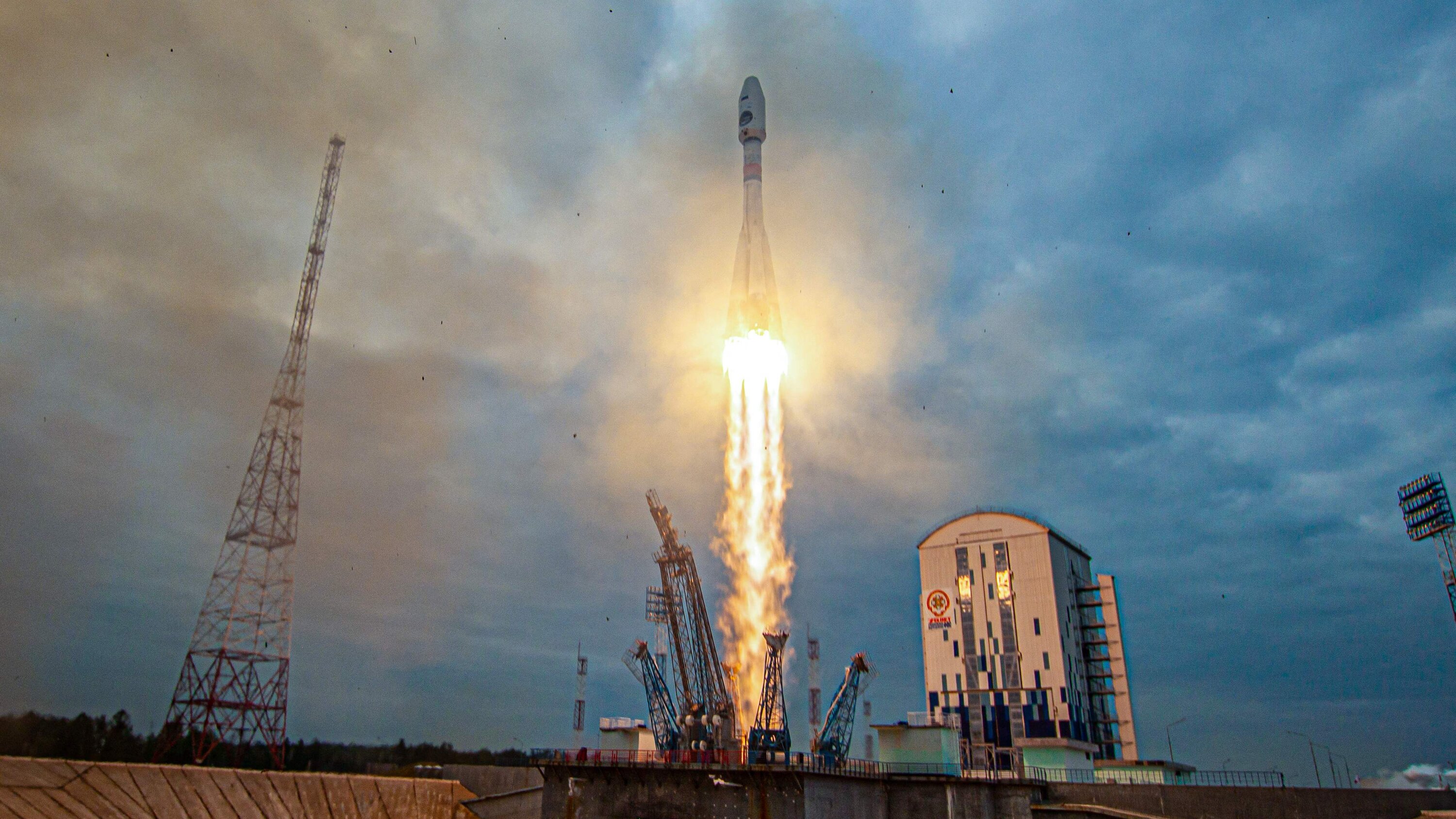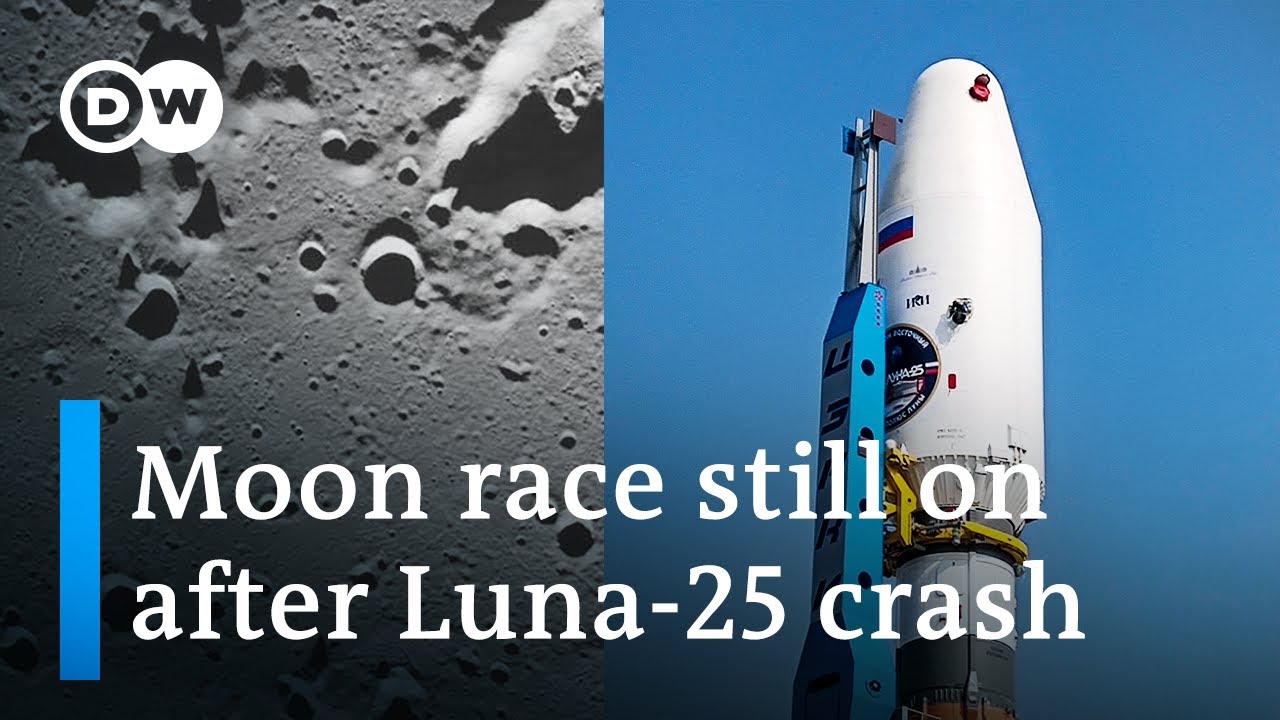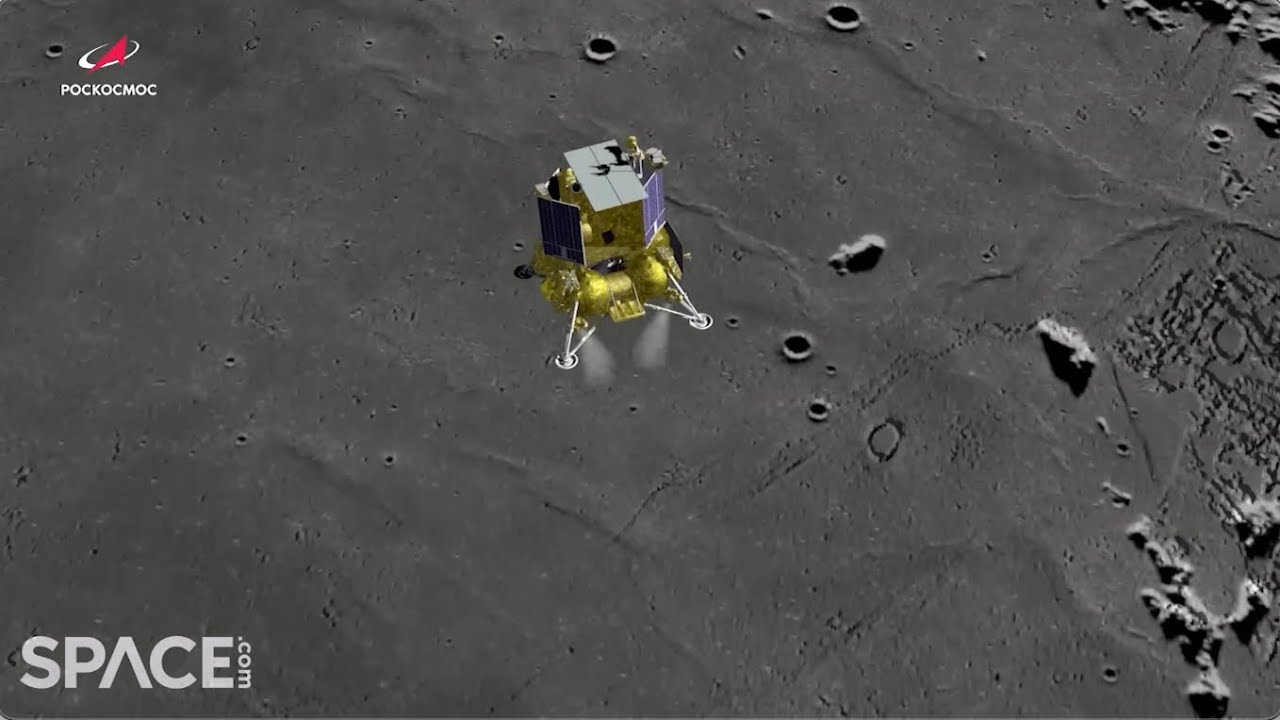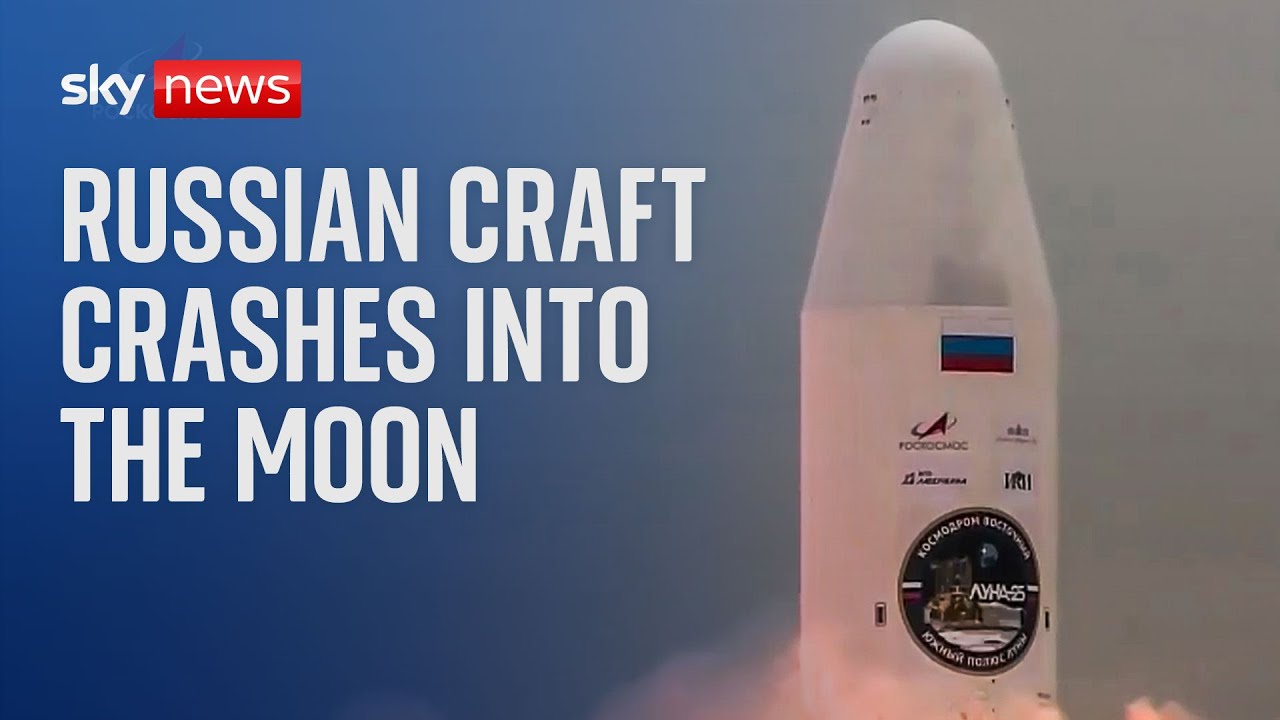Russia’s Luna-25 Spacecraft Crashes Into The Moon In Failure
Russia’s Luna-25 spacecraft crashes into the moon in failure, as confirmed by the country's space agency following a preliminary investigation. This incident marks a significant setback in Russia's space endeavors, which had once achieved groundbreaking milestones such as launching the first satellite, sending a man, and later a woman into orbit during the Cold War era.
Author:Hajra ShannonReviewer:Dexter CookeAug 21, 202310.2K Shares245.1K Views

Russia’s Luna-25 spacecraft crashes into the moon in failure, as confirmed by the country's space agency following a preliminary investigation. This incident marks a significant setback in Russia's space endeavors, which had once achieved groundbreaking milestones such as launching the first satellite, sending a man, and later a woman into orbit during the Cold War era.
The Luna-25 lander, representing Russia's initial attempt to reach the moon's surface since the 1970s, successfully entered lunar orbit last Wednesday with plans for an anticipated landing by Monday. However, at 2:10 p.m. Moscow time on Saturday, an unexpected "emergency situation" unfolded during the spacecraft's engine firing to position itself for the lunar landing.
Regrettably, Roscosmos, the state entity responsible for Russia's space operations, reported a loss of contact with the spacecraft merely 47 minutes after the engine ignition. Despite efforts to reestablish communication, the Luna-25 had veered off its intended trajectory and ultimately met a catastrophic fate, colliding with the lunar surface.
An interagency committee will be established to investigate the causes behind this failure, as announced by the space agency. Launched on August 11, the Luna-25 mission aimed to be the pioneer in reaching the moon's southern polar area. Numerous governmental space initiatives and private enterprises worldwide have shown interest in this lunar region due to the belief that it might harbor water ice, a valuable resource for potential future astronaut missions.
Luna-25's primary objective was to evaluate lunar landing technology, and the unfortunate loss of the lander at a stage of the mission considered less risky will intensify the scrutiny surrounding Russia's struggles in space exploration.
In lunar expeditions, the moments that typically cause the most apprehension include the liftoff from Earth and the subsequent landing on the moon's surface. Notably, over the past four years, three attempts at lunar landings - undertaken by India, an Israeli nonprofit organization, and a Japanese company - all managed to successfully navigate lunar orbits before encountering failures during the critical final minutes of descent toward the surface.
When missions falter during orbital engine activations, the root cause often traces back to subpar manufacturing and insufficient testing. These deficiencies were notably responsible for the failure of Russia's previous significant interplanetary robotic mission, Phobos-Grunt, in 2011.
Additionally, there's the potential for human error, which can be quite embarrassing, as seen with NASA's Mars Climate Orbiter that disintegrated in the Martian atmosphere in 1999 due to a unit measurement mix-up between metric and imperial systems.

Russia's lunar lander Luna-25 crashes into moon | DW News
Natan Eismont, a senior scientist at the Space Research Institute of the Russian Academy of Sciences, which spearheaded the scientific endeavors of Luna-25, disclosed that the spacecraft's engine hadn't performed as intended during the maneuvers aimed at adjusting the spacecraft's trajectory.
“What I can say, and it was noticed by outside observers, that the correction somewhat deviated from what has been stated,” said Dr. Eismont, who said he was not directly involved with the mission.
The mission controllers successfully managed the situation throughout its course until the final maneuver, according to Dr. Eismont. However, the ultimate burn intended to transition Luna-25 to an orbit preceding its landing trajectory, which would have brought it within 11 miles of the lunar surface, encountered difficulties.
The required forceful thrust did not unfold as initially intended. Dr. Eismont speculated:
“„It's most likely the braking thrust was either too strong or it was in a wrong direction.- Dr. Natan Eismont
Dr. Eismont also raised the notion that the mission managers might have benefited from allowing more time for preparation. "It’s up to the immediate participants to make these decisions," he stated, emphasizing the decision to proceed with the landing or to maintain the circular orbit for further troubleshooting was theirs to make. "They made their decision, and whether it was the correct decision, let a commission decide."
The mission's setback could potentially impact President Vladimir V. Putin, as he has showcased Russia's achievements in space as a cornerstone of his leadership. This narrative aligns with the Kremlin's portrayal of Russia as a formidable nation held back by a Western world led by the United States, which allegedly envies and feels threatened by Russia's capabilities. The nation's state-controlled space sector, in particular, has proven to be a valuable instrument in Russia's efforts to reshape its geopolitical interactions.
"The interest in our proposals is very high," Yuri Borisov, the leader of Russia's space program, informed President Putin during a televised meeting in June, elaborating on Russia's strategy to enhance space collaboration with African nations. This initiative aligns with the broader endeavors of the Kremlin to strengthen economic and political bonds with non-Western countries, especially in light of European and American sanctions.
Understated Coverage And Lingering Hopes
Despite this, coverage of the Luna-25 mission has remained relatively subdued, a trend that persisted even after the apparent crash of the spacecraft. For instance, the 6 p.m. news broadcast on Sunday on state-run Channel 1 allocated 40 seconds to the untimely conclusion of the Luna-25 mission.
"By all appearances, the Luna-25 mission has ended," Channel 1 reported, followed by a somewhat encouraging remark: "Scientists got invaluable information about the surface of the moon, among other things."
A similar optimistic sentiment was expressed by Anatoly Petrukovich, also affiliated with the Space Research Institute that directed Luna-25's scientific activities. Speaking to the state-run Tass news agency, Dr. Petrukovich remarked, "We are working on them and hope that this work won’t be slowed down but accelerated."
Over the past few decades, Russia's exploration of the solar system has experienced a considerable decline from the heights it achieved during the Soviet era. The most recent unqualified triumph occurred over 35 years ago when the Soviet Union was still intact.

Russia's Luna-25 lunar lander crashes in moon, ending mission
Two closely spaced twin spacecraft, Vega 1 and Vega 2, were launched. After a span of six months, both probes passed by Venus, with each releasing a capsule. These capsules contained landers that effectively descended onto the challenging terrain of Venus, along with balloons that were released to navigate through the planet's atmosphere.
Subsequently, in March 1986, the spacecraft achieved a remarkable milestone by flying within around 5,000 miles of Halley's Comet. During this encounter, they captured images and collected data on the comet's nucleus, as well as its dust and gas. However, subsequent missions aimed at Mars, launched in 1988 and 1996, faced unfortunate failures.
The most humiliating setback was the Phobos-Grunt mission in 2011. This mission was intended to reach Phobos, one of Mars's two moons, and bring back samples of its regolith to Earth. Tragically, Phobos-Grunt remained trapped in Earth's orbit and ultimately succumbed to reentry into Earth's atmosphere a few months later. This incident marked a particularly embarrassing low point in Russia's space exploration endeavors.
Subsequent investigations unveiled that Russia's financially constrained space agency had cut corners in manufacturing and testing procedures. The agency opted for electronic components that lacked a proven track record of enduring the harsh conditions of space, including extreme cold and radiation.
Apart from its involvement in ferrying astronauts to and from the International Space Station in collaboration with NASA, Russia's space activities have been primarily confined to low-Earth orbit.
The primary mission of Luna-25 was to conduct a year-long investigation into the composition of the lunar surface. Additionally, it was anticipated to showcase technological capabilities essential for a series of subsequent robotic ventures. These missions were designed to pave the way for an envisioned lunar base, a collaborative project between Russia and China.
However, the timelines for these ensuing missions - Luna 26, 27, and 28 - have already been significantly postponed from their original schedules. Moreover, with the Russian space program grappling with financial and technological challenges due to the sanctions imposed following the country's Ukraine invasion, further delays are probable.
Roscosmos now faces a complex decision: whether to undertake a fresh attempt at the Luna-25 mission or leave the landing technology untested, progressing to more ambitious follow-up endeavors. If Russia opts to reattempt Luna-25, this will likely introduce additional years of delay to the already extended timeline.

Russia's Luna-25 spacecraft crashes into moon
While NASA and the European Space Agency maintain collaboration with Russia concerning the International Space Station (ISS), other collaborative space initiatives terminated in the aftermath of the Ukraine invasion. Consequently, for their lunar missions, Russia now faces the challenge of substituting essential components that were initially intended to be supplied by Europe.
The creation of new space hardware has posed considerable challenges for Russia, particularly in the realm of electronics that can endure the rigorous conditions of outer space reliably. Anatoly Zak, the person behind RussianSpaceWeb.com, a platform that monitors Russia's space undertakings, emphasized the critical importance of improved electronics in space endeavors.
“„You cannot really fly in space, or, at least, fly in space for a long time, without better electronics. The Soviet electronics were always backwards. They were always behind the West in this area of science and technology. The entire Russian space program is actually affected by this issue.- Anatoly Zak
Numerous other ambitious Russian space initiatives are similarly facing delays, and their completion is likely to extend well beyond the official timelines stated. Angara, a series of rockets that have been under development for over two decades, has managed only six launches to date.
Recently, Vladimir Kozhevnikov, the primary designer responsible for Russia's upcoming space station, disclosed to the Interfax news agency that the inaugural flight of Oryol, a modern successor to the esteemed Soyuz capsule, is anticipated in 2028.
This announcement contrasts with the projection made by Dmitry Rogozin, the former head of Roscosmos, in 2020. He had declared that Oryol's debut flight would occur in 2023. Consequently, within a span of merely three years, the launch schedule has encountered a setback of five years.
Conclusion
Another nation, India, is now poised to seize the opportunity to achieve the first successful probe landing in the vicinity of the lunar south pole. Their Chandrayaan-3 mission was launched in July, selecting a slightly circuitous yet fuel-efficient trajectory to reach the moon. A landing attempt is scheduled for Wednesday.

Hajra Shannon
Author
Hajra Shannona is a highly experienced journalist with over 9 years of expertise in news writing, investigative reporting, and political analysis.
She holds a Bachelor's degree in Journalism from Columbia University and has contributed to reputable publications focusing on global affairs, human rights, and environmental sustainability.
Hajra's authoritative voice and trustworthy reporting reflect her commitment to delivering insightful news content.
Beyond journalism, she enjoys exploring new cultures through travel and pursuing outdoor photography

Dexter Cooke
Reviewer
Dexter Cooke is an economist, marketing strategist, and orthopedic surgeon with over 20 years of experience crafting compelling narratives that resonate worldwide.
He holds a Journalism degree from Columbia University, an Economics background from Yale University, and a medical degree with a postdoctoral fellowship in orthopedic medicine from the Medical University of South Carolina.
Dexter’s insights into media, economics, and marketing shine through his prolific contributions to respected publications and advisory roles for influential organizations.
As an orthopedic surgeon specializing in minimally invasive knee replacement surgery and laparoscopic procedures, Dexter prioritizes patient care above all.
Outside his professional pursuits, Dexter enjoys collecting vintage watches, studying ancient civilizations, learning about astronomy, and participating in charity runs.
Latest Articles
Popular Articles